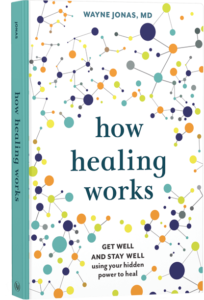The past 10 months have been a headache and, in anticipation of the long, trying winter weeks ahead, we are focusing on the theme of “protection” and how patients, and providers, can remain healthy—mentally, socially, and, of course, physically.
As we’ve touched on several of those topics in the last few blog posts, we wanted to address a concern specific to an estimated 20% of the American population: migraine headaches. In fact, because they are often misdiagnosed, the percentage is actually believed to be much higher.
According to the American Migraine Foundation, one in four households in the United States has at least one person suffering from migraine headaches, and per the Global Burden of Disease Study, migraine headaches are a leading cause of disability worldwide especially within the 15-49 age range.
What Are Migraine Headaches?
Migraine headaches cause a painful throbbing or intense pulsating usually in one side or area of the head. Migraine headaches can last anywhere from 4 to 72 hours and are recurring. The pain experienced during a migraine headache can be so intense that it interferes with daily activities.
When experiencing a migraine headache (with and without aura) common associated symptoms are nausea, pain related with moving the head, vomiting, neck pain, and increased sensitivity to smells, light, and noise.
A migraine headache can present with or without aura. An aura is a sense or sensation that usually precedes the headache and can include visual blind spots, temporary blindness, tingling in your face or hands, flashes of light, and/or other visual changes. A migraine with aura (sometimes referred to as a “classic migraine”) is a headache that coincides with or occurs shortly after these visual or other sensory disturbances.
Although once considered a vascular headache disorder, recent advances in the understanding of migraine headaches have found that migraine headaches are a “complex, variable disorder of nervous system function.” This means that scientists do not fully understand the physiology of migraine headaches at this time.
Migraine Triggers
Migraines can be triggered by a number of different variables, including hormones. Interestingly, migraine attacks are 3 times more common in women. Estrogen fluctuations can trigger migraines so events such as having your period, menopause, and pregnancy can cause migraine headaches.
Taking an oral contraception and/or hormone replacement therapy can increase migraine headaches. Nevertheless, some women have reported that their migraine headaches have decreased when taking oral contraception or hormones. In addition to hormonal triggers, migraine headaches can also occur as a result of:
- Alcohol (especially wine)
- Too much caffeine or caffeine withdrawal
- Stress
- Anxiety
- Intense sensory stimuli (such as strong sunlight or loud noises)
- Strong scents and odors
- Tobacco use
- Medications
There is no universal cure for migraine headaches and no absolute way to prevent a migraine from happening. Nevertheless, prevention and treatment of migraine headaches is crucial and effective.
Research has shown that after each migraine attack, another attack becomes more likely with some people developing chronic daily migraines. With the proper treatment, migraine headache attacks can significantly decrease and even become rare.

Integrative Approaches to Treating Migraine Headaches
It is estimated that over 50% of people with migraine headaches use integrative medicine approaches to prevent and address their migraine symptoms. Integrative medicine practices may not only help address migraine triggers and frequency of attacks, but also decrease migraine related symptoms during an attack.
1. Acupuncture
Acupuncture is a practice in which a trained specialist called an acupuncturist stimulates specific points on the skin called acupoints, usually with a needle. Stimulating acupoints increases the release of chemicals like endorphins (naturally-produced pain reducers) in the body and brain. These chemicals may directly impact how a person experiences pain.
A Cochrane systematic review of 22 trials (with 4,985 participants) on the effectiveness of acupuncture for the prevention of episodic migraine concluded that adding acupuncture is an effective adjunctive treatment to usual care for people with migraine headaches.
Another systematic review and meta-analysis of 28 randomized control trials (with 2,874 patients) on the impact of acupuncture on migraines reported that acupuncture had less adverse side effects, was more effective, and improved intracranial blood circulation when compared with medications. The authors also reported that acupuncture lowered pain scores, reduced the frequency of migraine attacks, and increased treatment effectiveness more than sham (placebo) acupuncture.
2. Mindfulness Meditation
Meditation is a practice that involves consciously exerting control over breathing and attending nonjudgmentally to the present moment. It produces multiple physiological and chemical effects such as decreased heart rate, blood pressure, and cortisol (stress hormone) levels.
A meta-analysis of 10 randomized control trials and 1 nonrandomized, controlled clinical trial (with 315 patients included) looking at people with migraine or tension type headache found that mindfulness meditation significantly improved pain intensity and decreased headache frequency when compared with a control group. Specifically, mindfulness-based stress reduction (MBSR) had the greatest impact on pain intensity (P < 0.000) and an intervention of 8 weeks had the greatest impact on symptom reduction (P < 0.000).
A randomized control trial looking at the impact of MBSR on 40 participants with the diagnosis of migraine and/or chronic tension-type headache found that headache pain and quality of life significantly improved after engaging in 8 weeks of MBSR.
If you’re looking to try mindfulness meditation you can watch my breathing meditation video. To learn more you can also download our Moving Mediations pocket guide.
3. Biofeedback
Biofeedback is a self-regulation technique in which an individual learns to control physiological processes through the monitoring of these processes on devices such as a computer screen or a personal device. The device or computer program converts these physiological processes into meaningful information (visual or auditory) which enables the participant to change these processes through the use of breath, posture, thoughts, and expressions.
Biofeedback has been found to help with relaxation, reduce stress, and decrease blood pressure. There are a number of different biofeedback methods including heart rate, brainwaves, breathing, temperature, muscle contraction, skin charge, and sweat gland activity. Biofeedback can be done with or without a biofeedback trained professional.
A study looked at 37 patients with migraine headaches who received an intervention of neurofeedback and biofeedback three times a week for an average of 6 months. The study found that the combined biofeedback and neurofeedback intervention was more effective in decreasing headache frequency than medication alone. Additionally, the impact of the intervention lasted for an average of 14.5 months after the 6 month treatment ended.
Another study looked at 27 patients with migraine headache who received eight, 30 minute sessions of a biofeedback intervention (EMG-biofeedback, temperature-biofeedback, and relaxation training) and were instructed to engage in progression muscle relaxation at home. The study found headache intensity significantly decreased after the 8 sessions of the biofeedback intervention in comparison to the control group. The intervention also decreased headache frequency by 1.9 days and significantly improved headache-related disability, psychological stress, depression, anxiety, and irritation.
Bottom Line
Conventional therapies work for migraine headaches and your doctor or primary care provider will most likely recommend or offer you those treatments first. Usually, you will be offered medications and told to track the behaviors, situations, and food choices that trigger migraines or increase their frequency.
For people who find that life related stress and mental health issues, such as anxiety, trigger migraine headaches, psychotherapy (usually CBT) will be recommended. However, many find that adding integrative modalities (such as acupuncture, mindfulness, biofeedback, and/or vitamins or herbs) into their treatment plan can augment migraine prevention and decrease the frequency and intensity of their migraine headaches.
If you would like to learn more about how to find treatments for migraine headaches, please visit this link. To learn more and to see all of the references associated with this blog post, download our pocket guide Integrative Health Approaches for Treating Migraines.

Your Health Into Your Own Hands
Drawing on 40 years of research and patient care, Dr. Wayne Jonas explains how 80 percent of healing occurs organically and how to activate the healing process.

